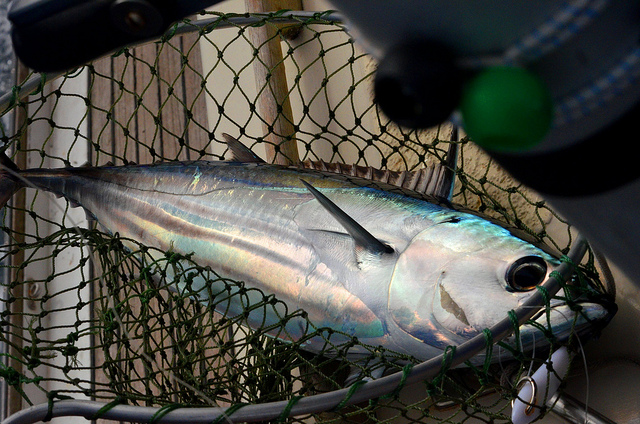This week, leaders at the Pacific Islands Forum meeting in Palau received a clear warning on the state of the region’s fisheries.
Fisheries are one of the key issues on the minds of Pacific Island leaders: they’re keenly aware of the importance of this industry to their countries and the wider region. Indeed, Palau’s President Tommy Remengesau Jr. has declared the theme of this year’s forum to be ‘The Ocean: Life & Future’.
In an earlier post, I argued that effective management of the fish stocks in the Pacific is important for food security, healthy ocean ecosystems and livelihood security. I even suggested that, in many ways, sustainable fisheries help to underpin regional political stability.
The head of Western Central Pacific Fisheries Commission, Glenn Hurry, pointed out yesterday at the Forum meeting that the total catch of the key tuna species is valued at around $US6 billion. From that, the income to Pacific island countries is estimated to be in the order of $350–400 million.
But Hurry noted that we don’t know the impacts of the last two years of fishing. So there remains a ‘level of uncertainty about what our world really looks like but indications are that catches have not reduced’. He warned that Pacific bigeye tuna is overfished and requires urgent management action and that yellowfin tuna is at 38% of the original stock biomass and requires stabilisation.
Regional leaders were told that there’s an urgent need to agree and implement a target reference point (i.e. where you’d like the fish-stock level to be to ensure the maximum and most profitable catch levels) for skipjack to retain the stock at optimal levels.
Island leaders were told there are simply too many boats in this fishery and more are coming in: ‘We must agree on arrangements to restrict fishing effort and boats to a more sustainable level and do it now and not tomorrow.’
There’s now 300 large-scale, purse seine vessels fishing in the tuna fishery, up from 225 vessels in 2004 and with 37 new purse seiners under construction in Asian ship yards. Seventeen will enter the regional fishery over the next 12–24 months.
One of the challenges here is that, as the Pacific tuna fishery becomes more valuable, it’ll become harder to manage as both the companies and the countries are profiting from both income and employment (working in processing plants, canneries, on vessels and in regional agencies). But the stark message to the Forum leaders this week was that if the region doesn’t adjust early then the pain will be greater later on.
Australia will need to play its part in assisting the island countries to manage their tuna stocks to provide the long-term sustainability of the fishery for future generations of Pacific Island people. That will require our long-term investment in the islands to enhance fisheries management and work with regional fisheries bodies in areas such as negotiating fisheries’ access arrangements.
We often fail to grasp here that retaining strong healthy Pacific fish stocks is critical for island income, investment, food security and generating some degree of economic hope for island peoples.
Regional leaders at the Forum were left in no doubt this week that the Pacific can’t continue to fish at current levels and expect the resource to last. The day the Pacific loses its fish, we’ll not only have food security issues on our doorstep, but significant adverse income and employment impacts on our neighbours. And if that happens it’ll most likely be Australia that picks up the tab.
Anthony Bergin is deputy director of ASPI. Image courtesy of Flickr user r36ariadne.


